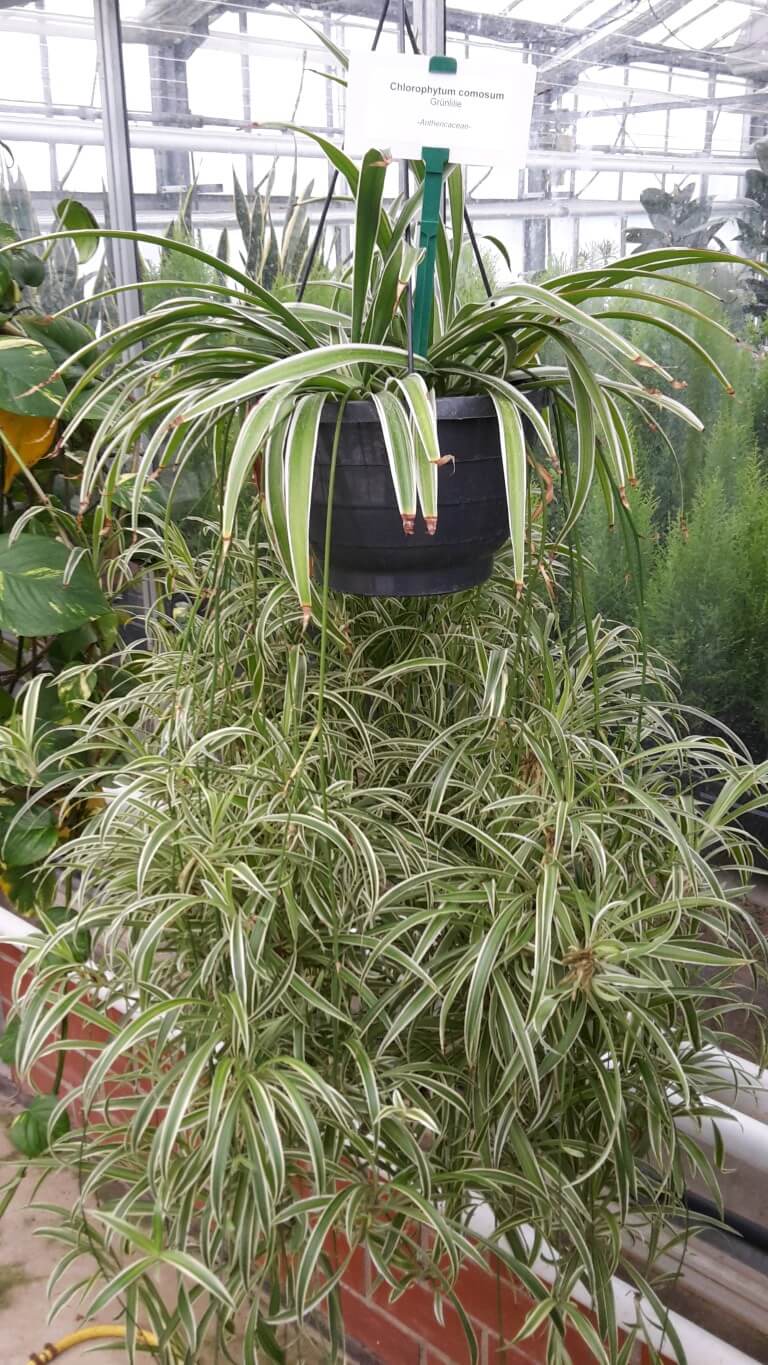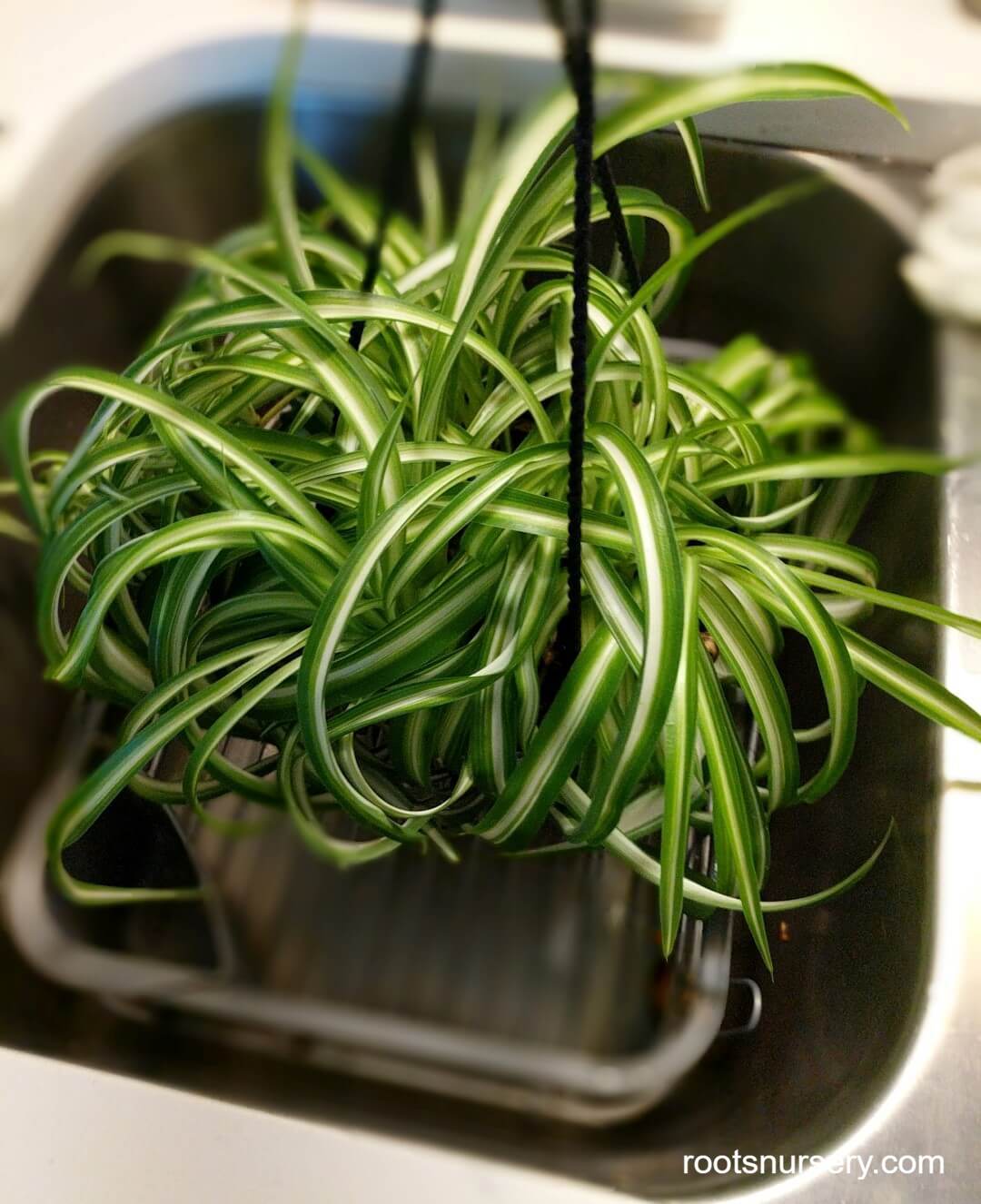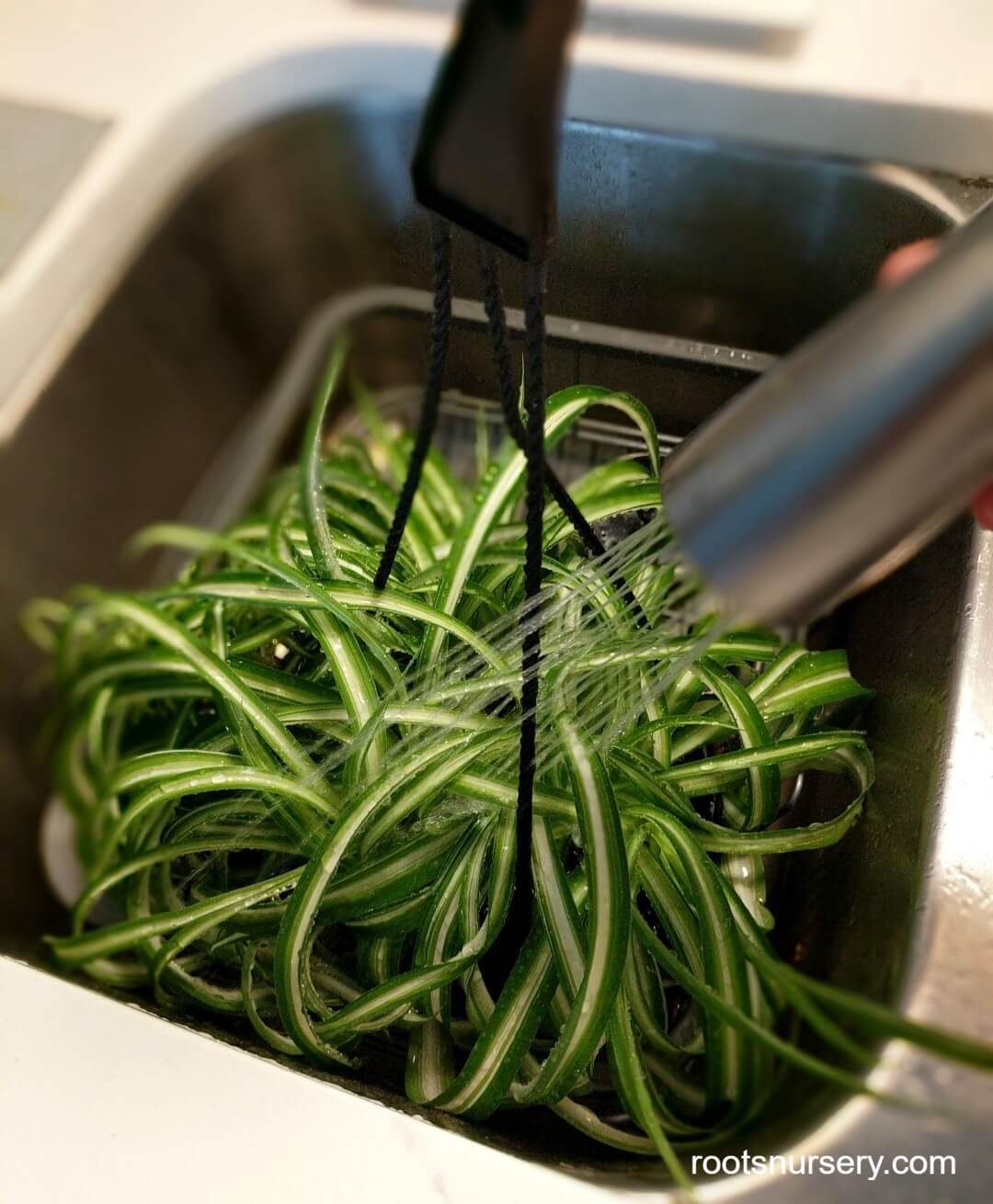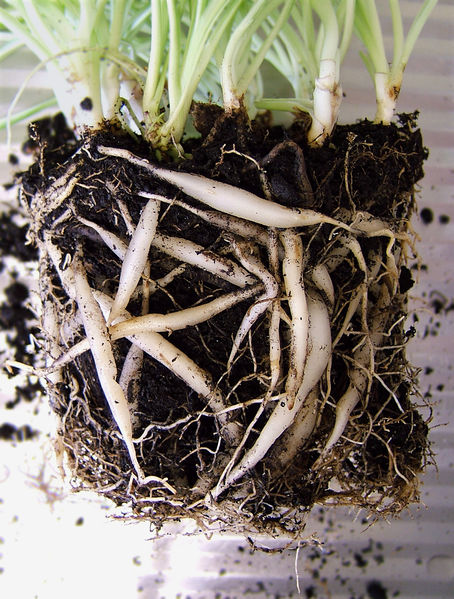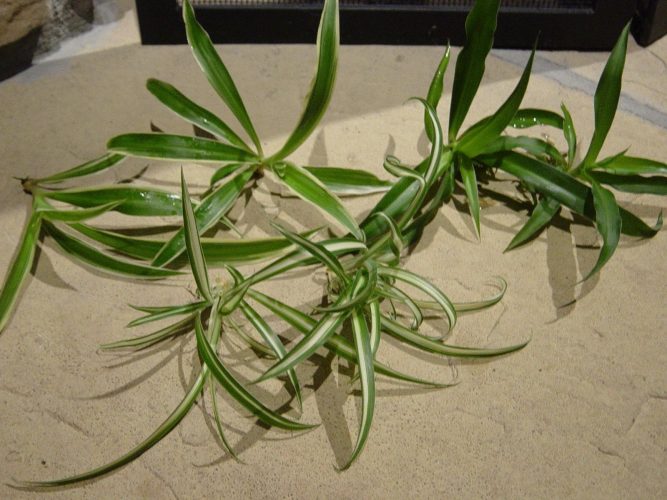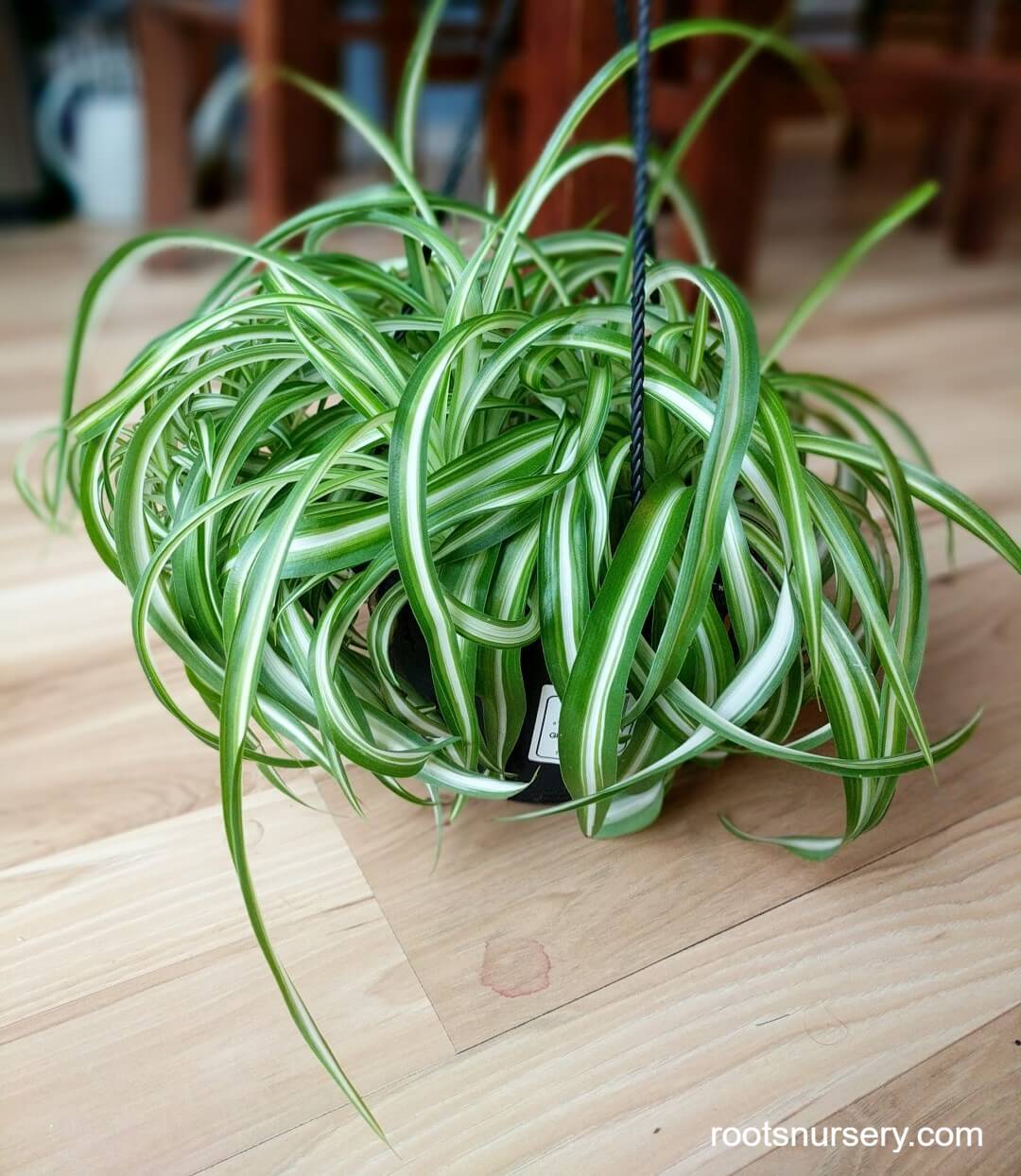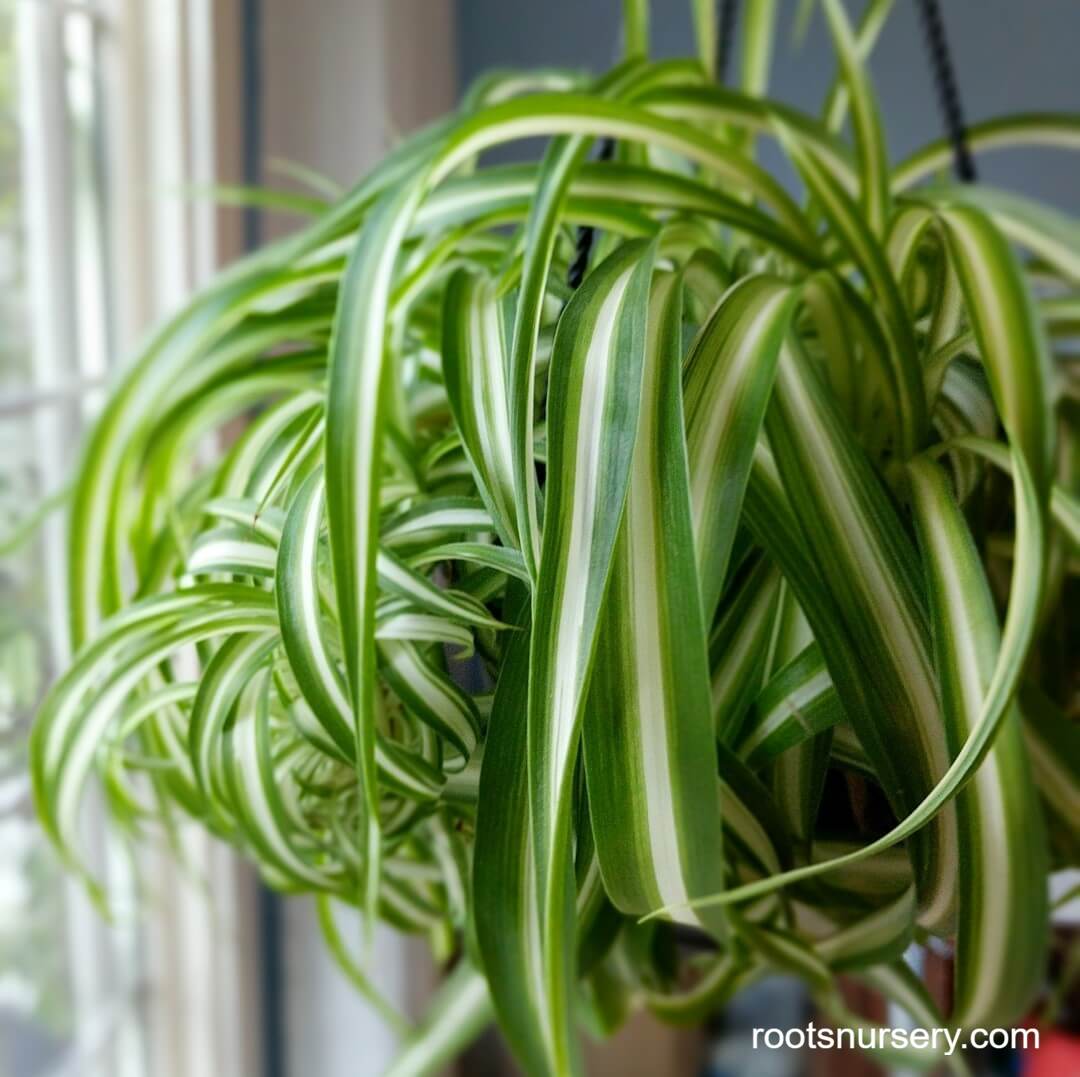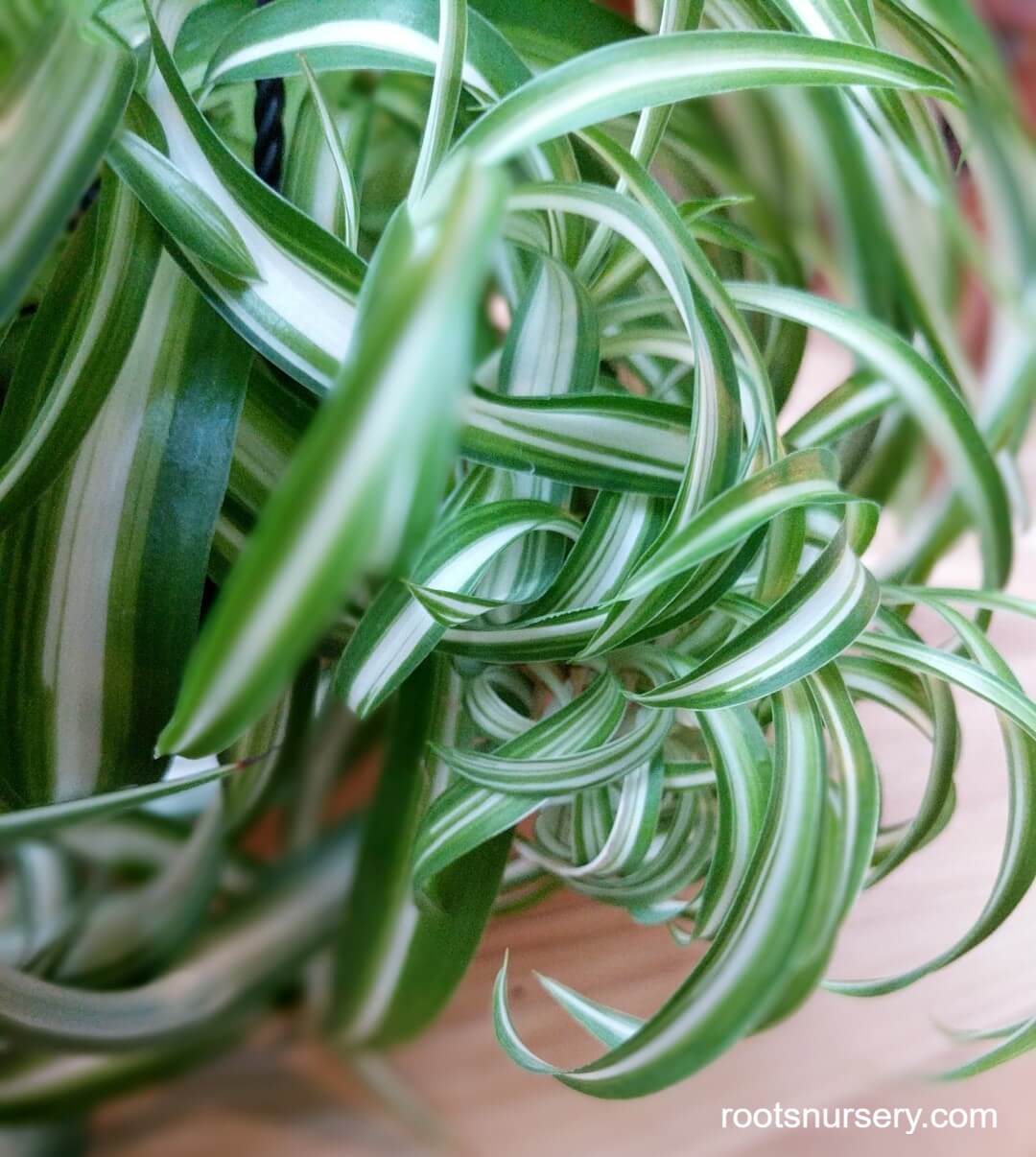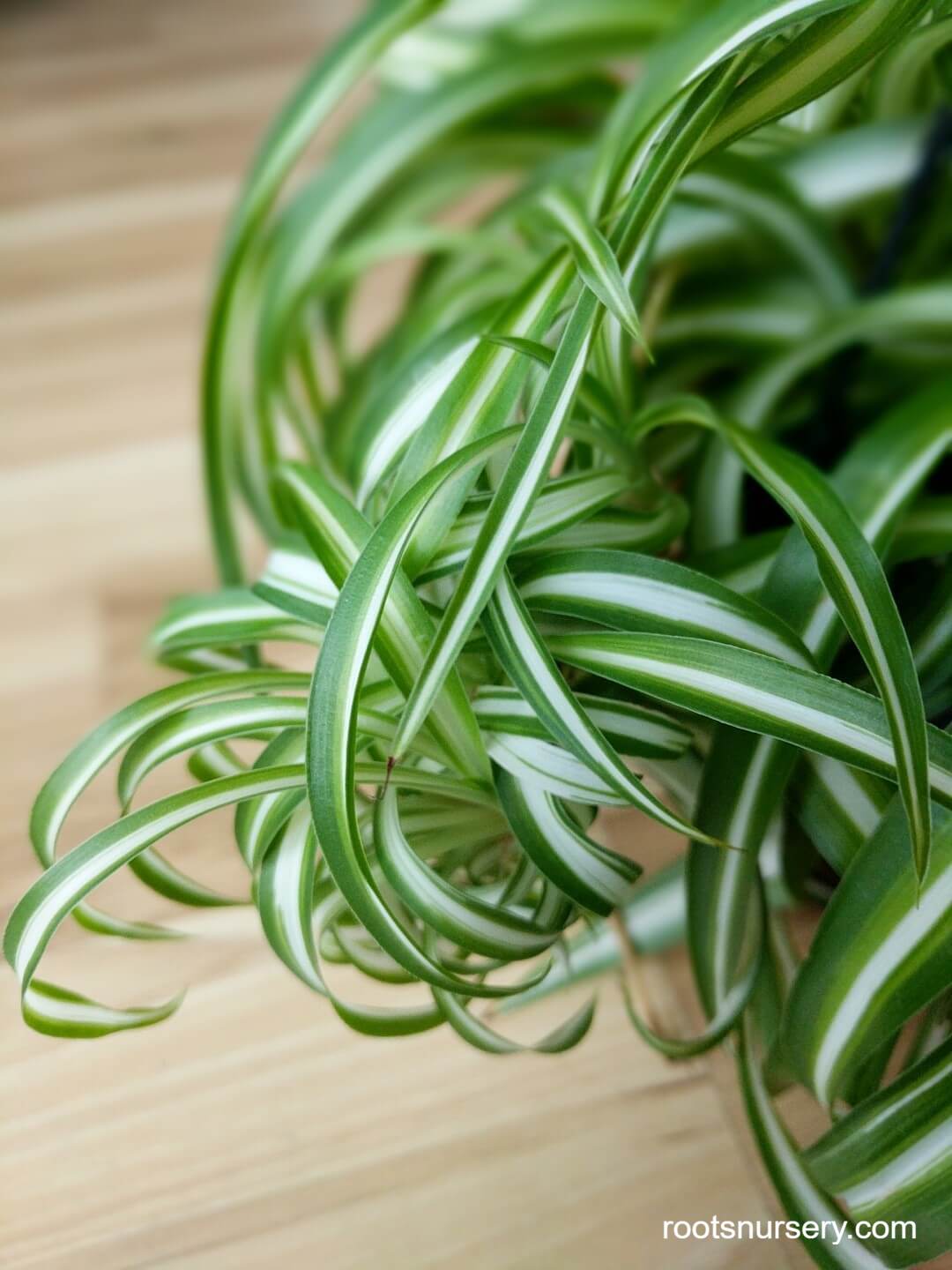Chlorophytum Comosum
Native to Africa
Spider plants are one of the most popular house plants for good reason. They’re beautiful and super easy to care for. They’re practically maintenance free besides a quick watering once a week or so, and cleaning up dead leaves once in a while. This makes it the perfect starter plant for any beginner indoor grower. Whether you’re looking for the company of just one or two plants or want to live in an indoor jungle, Spider Plants can help you get there.
Spider Plant Benefits:
This plant is great at cleaning the air. Chosen as one of Nasa’s clean air plants in their 1989 study, they’re shown to clean formaldehyde, xylene, and toluene from the air. And you only need a mere 1 plant per 100 square feet. So go ahead and place 1, 2, or 3 in any room you’d like cleaner air.
You can buy your spider plant at home depot. I usually see them there inside, in the houseplant section, but if you cannot find one there, you can usually find them easily on Amazon, eBay, or Etsy.
Potting & Repotting
Many times, you would keep the plant in the pot it came in, especially if it was purchased in a hanging planter. But you may want to repot your spider plant right away, or in the future, after it put on some solid growth.
As with most houseplants, make sure to use a pot with good drainage.
Give this plant 2″ of room to grow. Spider plants grow quickly, but don’t mind being cramped inside their pot. They actually prefer to be a little root bound, so you don’t have to be overly diligent about repotting. Use regular potting soil from the hardware store, Spider plants don’t need anything fancy. Remove the plant from the original pot. Break up the roots a little bit. Fill the new pot 2″ with soil. Plant in the new pot.
Location & Lighting
Never put your spider plant in the sun. Spider plants like vibrant indirect light. It’s best at 6 feet away from a south-facing window or door. Make sure the sun doesn’t wander onto the plant for too long during any part of the day.
You would usually always keep your spider plant indoors year-round in 62 to 75-degree temperatures. Many plant owners are accustomed to bringing their indoor plants outside for the summer. Since Spider plants can’t handle too much direct sunlight, you probably would never bring your plant outdoors, unless you have a shady deck or covered porch.
Watering
Spider plant likes humidity. That’s why many people like to hang them in their bathroom. Some people mist their spider plants, but this only gives the plant humidity for maybe 15 minutes. But it can live in a dry home environment if you water correctly.
I like to bring the entire plant to the kitchen sink and place it under running water straight from the faucet. Water will run all the way through the pot, drenching the roots, then out, into the sink. I let it sit in the sink for a while to drain and put it back up on the shelf. This way, the plat is never sitting in too much water, prone to rot.
You can water directly into the pot as well. Make sure you have a saucer under the dish to catch water. When a plant becomes root bound or the soil drys out too much, water will go straight through the pot and your plant wont get any water. If this happens, use the saucer to water from below.
If you have highly chlorinated or hard water, watering from the faucet might not be an option. Your water might need to be run through a filter before watering your plants.
Add an inch of water to a saucer or dish under the pot, watering from the bottom. The soil will soak up the water and feed the plants at the root.
Establishing a watering schedule.
Spider Plant roots (below) are thick and of a tuberous nature. Because of this, their capacity to hold water is excellent. You want the soil to dry before watering again. This most likely will be once a week. Check to see when the top 1 inch of soil is dry and mark it on a calendar. Measure how much water you use each time.
Follow these troubleshooting tips below as well. In time, you will learn how much water your plant likes.
Troubleshooting Table
| Problem | Cause | Solution |
| Brown Tips | Not Enough Water | Increase Water and/or Mist |
| Chemicals in Water | Use Spring water or Let tap water sit 24 hrs | |
| Overfertilization | Cut back on fertilizer | |
| Drab Muted Colors | Not Enough Water | Increase Water until vibrant color returns |
| Lost Variegation | Not Enough Light | Move Closer to Light Source |
| Soft Transparent Leaves | Rot from Overwatering | Let plant dry out and then water less |
| Base of Leaves Brown | Rot from Overwatering | Let plant dry out and then water less |
| Sticky Leaves | Aphids or Scale Insects | Spray with Neem oil |
Fertilization
Add half strength of an indoor fertilizer solution while watering. Do this once a month, maybe twice for the best Spider plant growth. Remember to only fertilize during the growing season. During winter, plants slow their growth or go dormant totally. Stop fertilizing in the fall and winter. Start again in the spring.
Pruning
Most of the time it’s not necessary to prune your spider plant. But sometimes, it might need a little help.
Cut off any leaves that are brown, broken, or flopping. Cut it back all the way to the soil. When you’re cleaning up a spider plant, you can cut a lot off before damaging the plant. This guy is pretty tough. It will grow back.
Propagation
The plant sends out shoots with a ‘pup’ at the end. These will become new baby plants. They have the capability to grow roots on their own while hanging in the air, without the help of soil or water. When you see thick, white roots developing on the pup, you can cut it from the shoot and place it in a glass of water, to watch the roots grow out.
When the roots are about an inch long it’s time to plant it in a pot of soil. More light increases these offshoots, so if your plant isn’t producing well, you can try moving it closer to the window.
Are Spider Plants Toxic?
CATS love spider plants. Thankfully, the Spider plant is not toxic to cats or other household pets. So if they ingest some or even a lot, it won’t hurt them. However, you don’t want your cat to destroy your plant. So if your curious tabby takes an interest in your spider plant, you may want to move it to a higher shelf or hang it from a hook.

